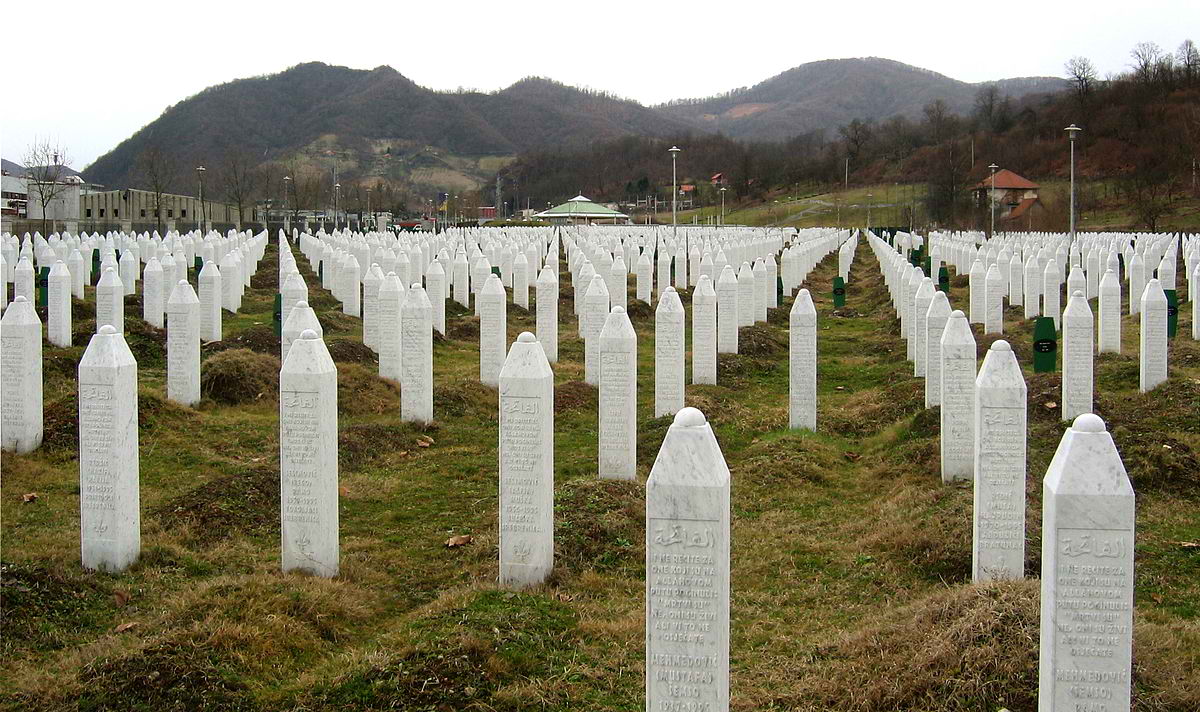Headline
Bosnian mom buries her 2 sons, among nearly 700 newly identified Srebrenica massacre victims

The cemetery at the Srebrenica-Potočari Memorial and Cemetery to Genocide Victims. Photo by Michael Büker / Wikimedia Commons.
SREBRENICA—After 19 years, Hajrija Selimovic finally has a place to mourn her family.
Selimovic buried her two sons Friday next to her husband’s white tombstone in a cemetery for the victims of Srebrenica, Europe’s worst massacre since World War II.
The three were among the 8,000 Muslim men and boys killed when Serb forces overran the eastern Bosnian town on July 11, 1995.
Samir was 23 and Nermin 19 when they were shot by an execution squad.
The remains of Srebrenica victims are still being found in mass graves to this day and are being identified using DNA technology. Every July 11, more are buried at a memorial centre near the town.
“They were victims of monstrous nationalism,” Camil Durakovic, Srebrenica’s mayor, said Friday.
Selimovic’s two sons were among the 175 newly identified victims laid to rest this year, joining 6,066 others including their father Hasan, who was found in 2001 but buried only last year.
“I didn’t want to bury him because they found only his head and a few little bones,” Selimovic said. “I waited, thinking the rest will be found and then everything can be buried at once … but there was nothing else and we buried what we had.”
The eastern, Muslim-majority town of Srebrenica was a U.N.-protected area besieged by Serb forces throughout Bosnia’s 1992-95 war. But U.N. troops offered no resistance when the Serbs overran the town, rounded up Muslims and killed the males. An international court later labeled the slayings as genocide.
After the massacre, then-U.S. Secretary of State Madeleine Albright waved satellite photos of mass graves at the U.
N. Security Council, saying Washington knew where the mass graves were.
That’s when Serb troops rushed to the sites with bulldozers and moved the remains to other locations. As the machines ploughed up bodies they ripped them apart, and now fragments of the same person can be scattered among several different sites.
“The perpetrators had every hope that these people would be wiped out and never found again,” said Kathryne Bomberger, head of the International Commission for Missing Persons, a Bosnia-based DNA identification project.
The commission, established in 1996, has collected almost 100,000 blood samples from relatives of the missing in the Yugoslav wars. It has analyzed their DNA profiles and is now matching them with profiles extracted from the estimated 50,000 bone samples that have been exhumed.
The group grew into the world’s largest DNA-assisted identification program. It has identified 14,600 sets of remains in Bosnia, including those of some 7,000 Srebrenica victims. The commission, which also helped identify victims of Hurricane Katrina and the 2004 Asian tsunami, is now identifying missing people in Libya, Iraq, Colombia, Kuwait, Philippines and South Africa.
Bosnia remains its biggest operation.
“Without DNA, we would have never been able to identify anyone,” Bomberger said Thursday. “However, this means that the families have to make the difficult decision on when to bury a person. And many of the women from Srebrenica want to bury their sons, their family members, the way they remember them when they were alive.”
So thousands of traumatized mothers and widows are faced with a dilemma—whether to either bury just a fragment, or wait until more bones are found.
This year, the families of about 500 identified victims have decided not to accept just two or three bones. Those will remain stored in a mortuary in the northern city of Tuzla until more remains are found—or until the families get tired of waiting.
“We calculate that there are still about 1,000 persons missing. … In addition, there are probably thousands of pieces of bodies” still to find, Bomberger said. “This is an extremely complex process that has taken a long time, just simply because of the efforts the perpetrators went to to hide the bodies.”
Selimovic, who made a hard decision last year regarding her husband, said this year’s decision was easier.
“Now I am burying two sons,” she said. “They are complete. Just the younger one is missing a few fingers.”
Cerkez reported from Sarajevo.





















